What is this all about?
To find one’s self here, complete with a beating heart and inflatable lungs?
To find that we have legs, arms, and a mind that thinks…
WHY, are we here?
In a logical sense, splitboard mountaineering is one of the silliest activities a person can get interested in. To go into environments that are clearly, blatantly and outrageously not designed for sustained human life. To seek out vast wilderness, and to climb and descend massive snow-covered mountains seems to be more congruent with the pleasure-seeking behavior of a drug habit than the recreational outlet of educated, intelligent individuals. Because let’s face it, big mountains are dangerous.
[br]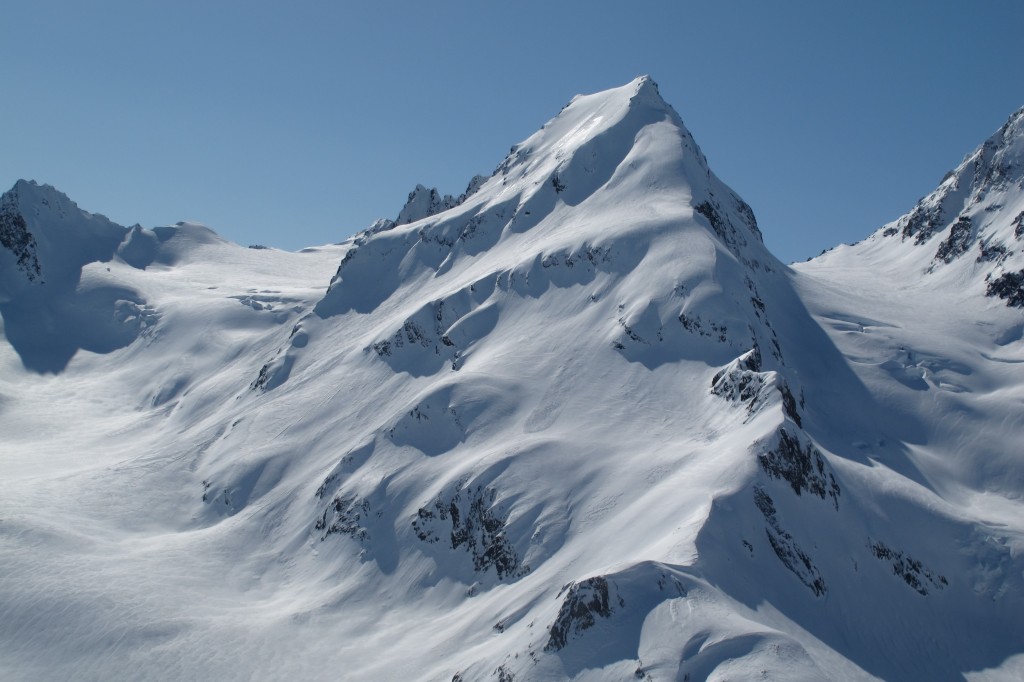
Day three’s primary objective. Photo: Louie Dawson
In order to fully understand this activity, an irrational and emotional perspective is required. My viewpoint is that our evolution as a species, the process of surviving, reproducing and changing for millions of years in the overwhelming enormity of pre-civilized planet Earth, has wired a specific set of primal needs into our brains. Perhaps simply holding the “idea” that there are still places that have never seen a single human footprint, or that have never been pillaged of the last surviving natural resource is all that is important. Even if people never go there, perhaps wilderness is essential for the sake of our collective bank of human sanity.
[br]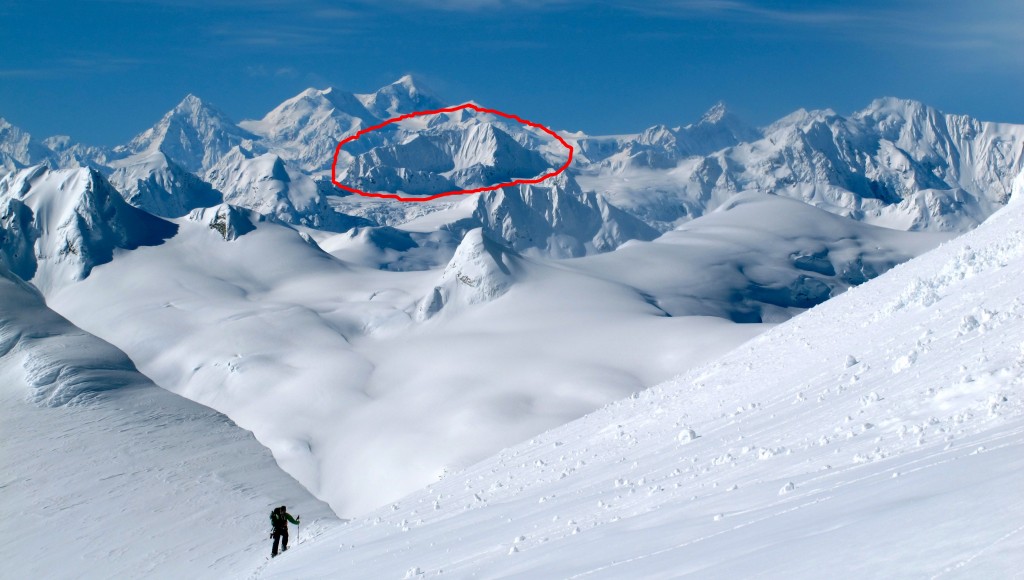
An inspiration for personal expansion. Photo: Tyler Wilkes
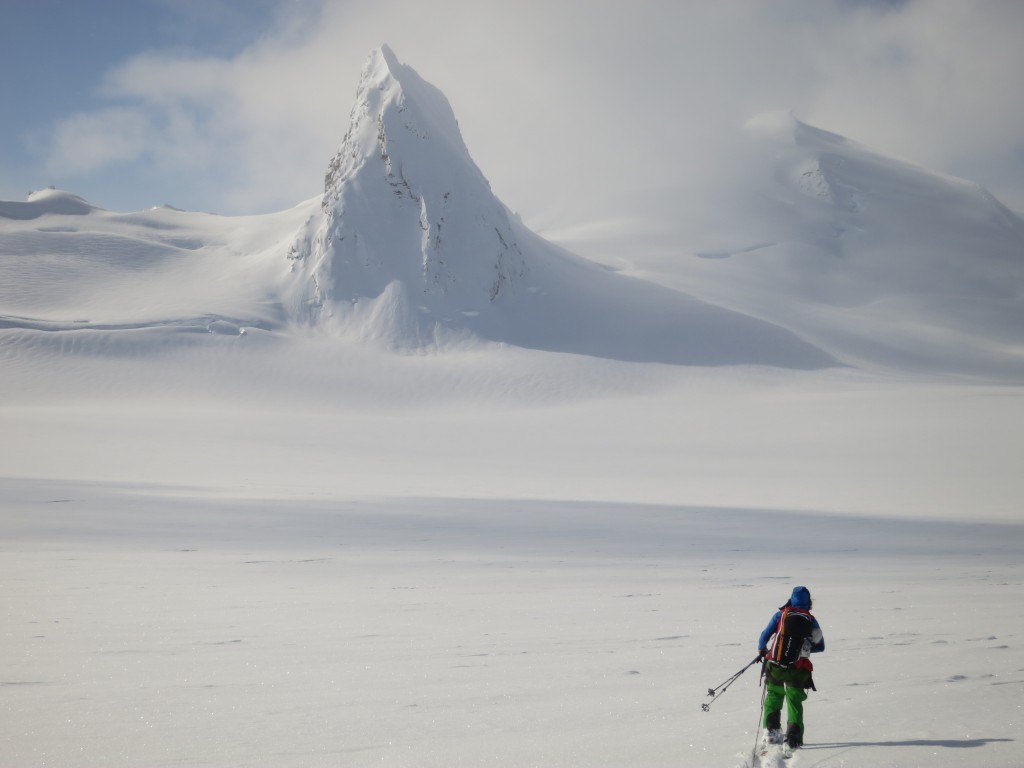
Jonathon Cooper, peeling back his layers. Photo: Louie Dawson
This question of “why am I here?” grows to be wonderfully irrelevant. The purpose of existence becomes beautifully and eloquently clear: STAY ALIVE.
[br]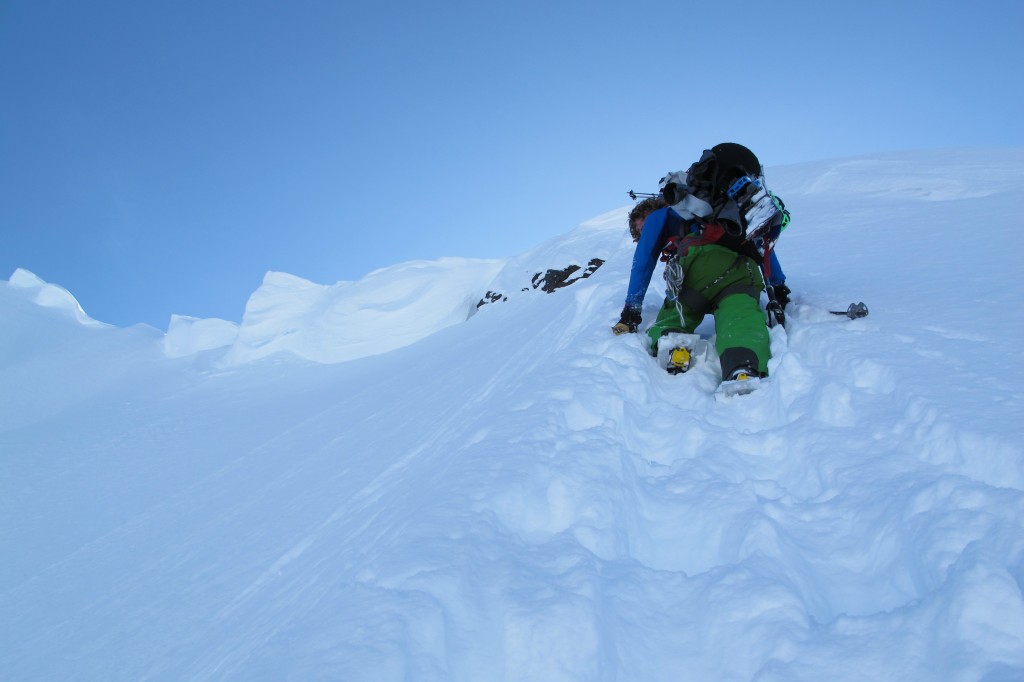
Nearing the summit of our Apex Spine Descent. Photo: Tyler Wilkes
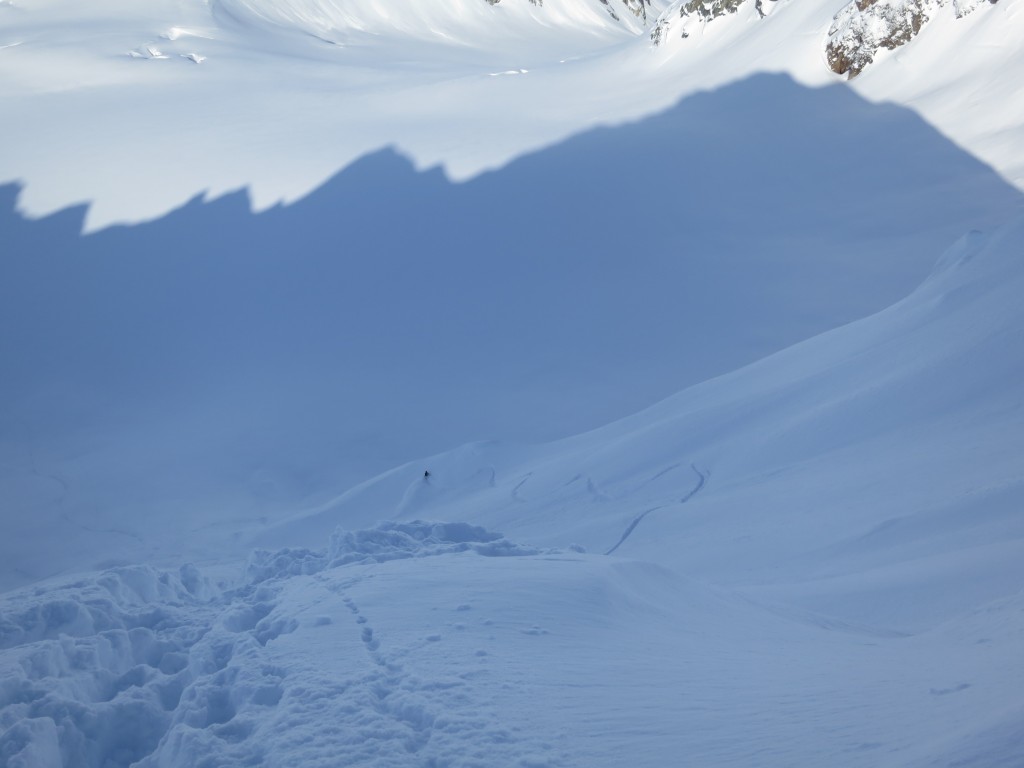
Russell Cunningham, finally releasing nerves, and flowing into his first Alaskan Spinewall Experience. Photo: Louie Dawson
All that being said, it is virtually impossible to remain monk-like in a frozen vastness beyond a set period. What I have found is that the time following a period spent in the mountains has consistently been the most powerful.
[br]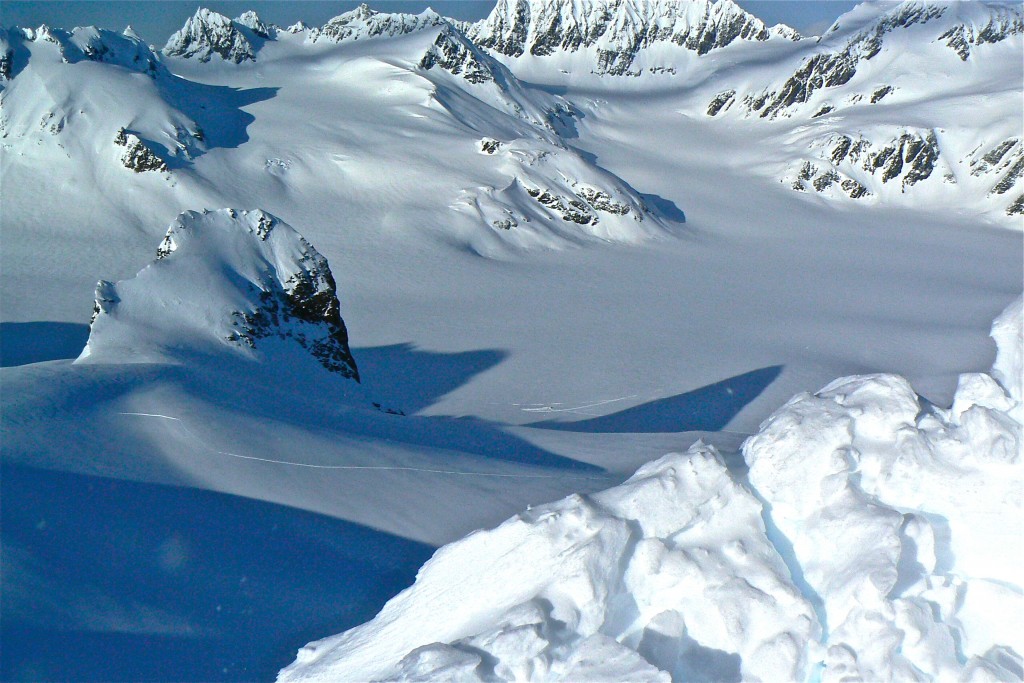
En route above camp. Photo: Russell Cunningham
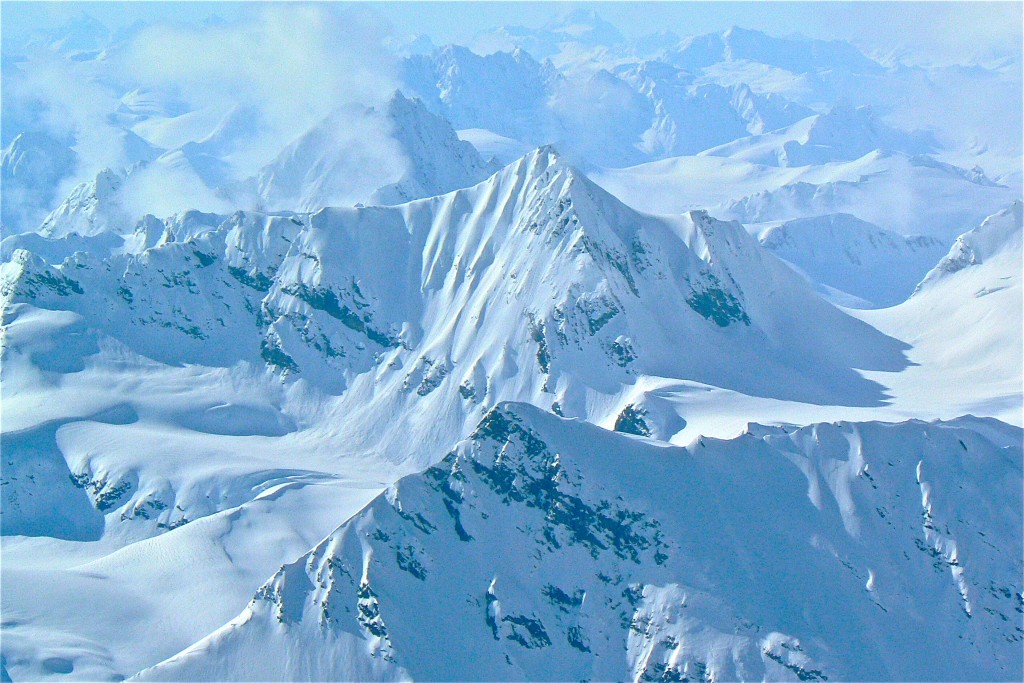
Gazing towards the heart of Glacier Bay, it becomes apparent how many lifetimes can be spent in glorious exploration. Photo: Russell Cunningham
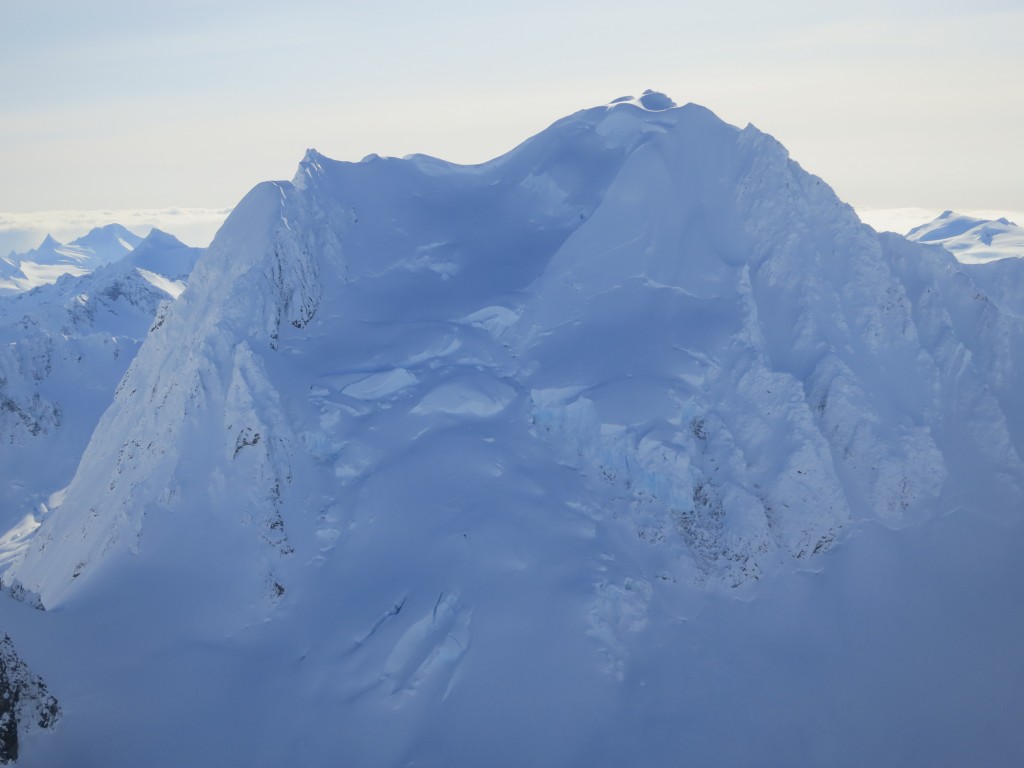
Unnamed mountain, carved by the unbelievable strength of glaciation. Photo: Louie Dawson
[br]
The reality is that survival behavior does not allow for much emotional processing. When one’s life depends on the placement of a single foot, or the direction of a single turn, there just isn’t time to reflect on much else.
[br]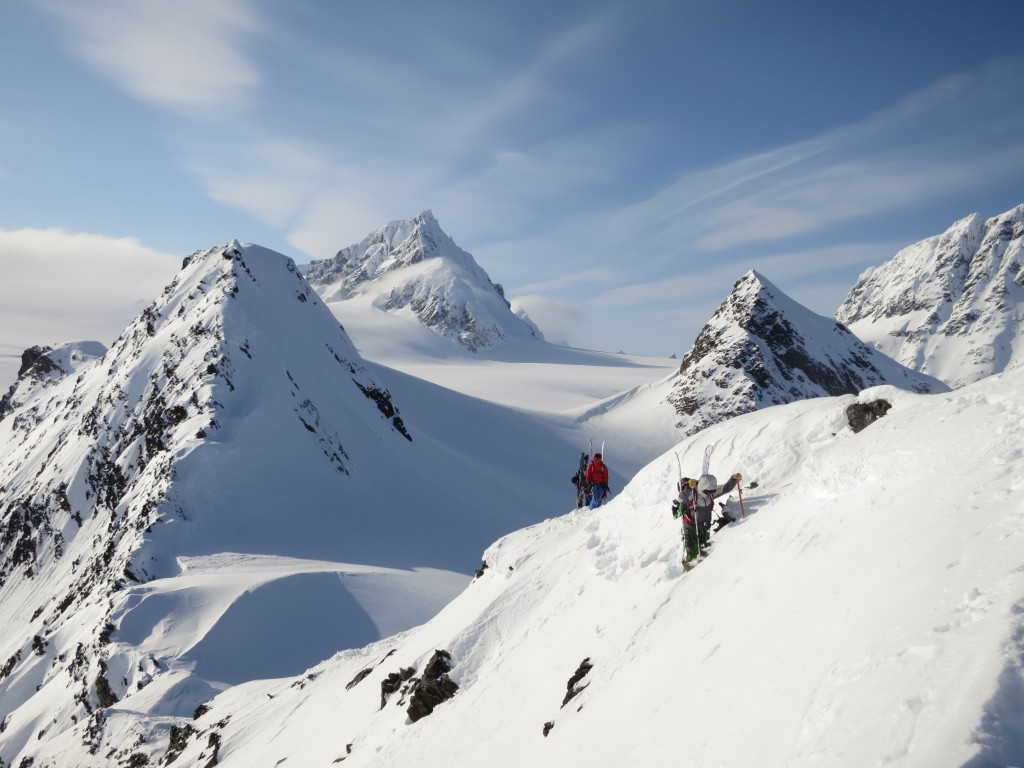
Carefully traversing a ridge and fulfilling Alaskan Dreams. Photo: Louie Dawson
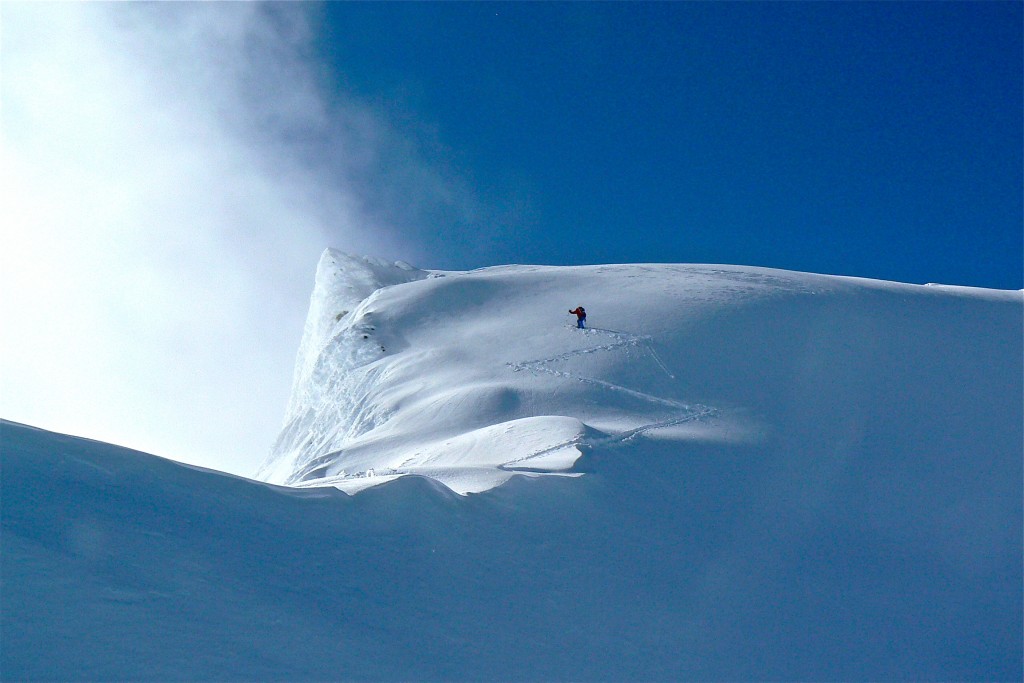
Tyler blazing towards the most remote summit of our venture. Notice the 2000 foot exposure. Photo: Russell Cunningham
The process following a mountain venture is a complex one. This is the essential recovery phase in which not only the body begins to rebuild the damaged muscle proteins and add bone density, but the brain itself finally has a chance to make sense of the experience, making sense of not only what it meant to live in the wilderness, but also what it meant to go through the process of changing identities– To be a modern human who has been touched by ancient wilderness.
[br]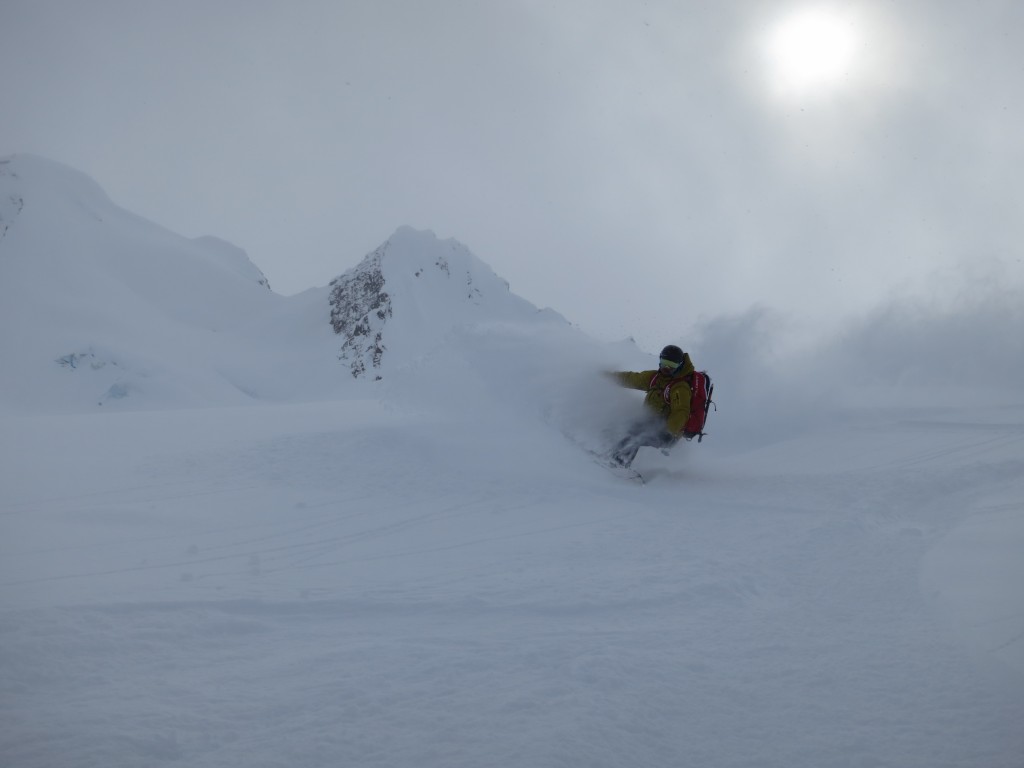
Becoming touched the most incredible snow of my life. Photo: Jonathon Cooper
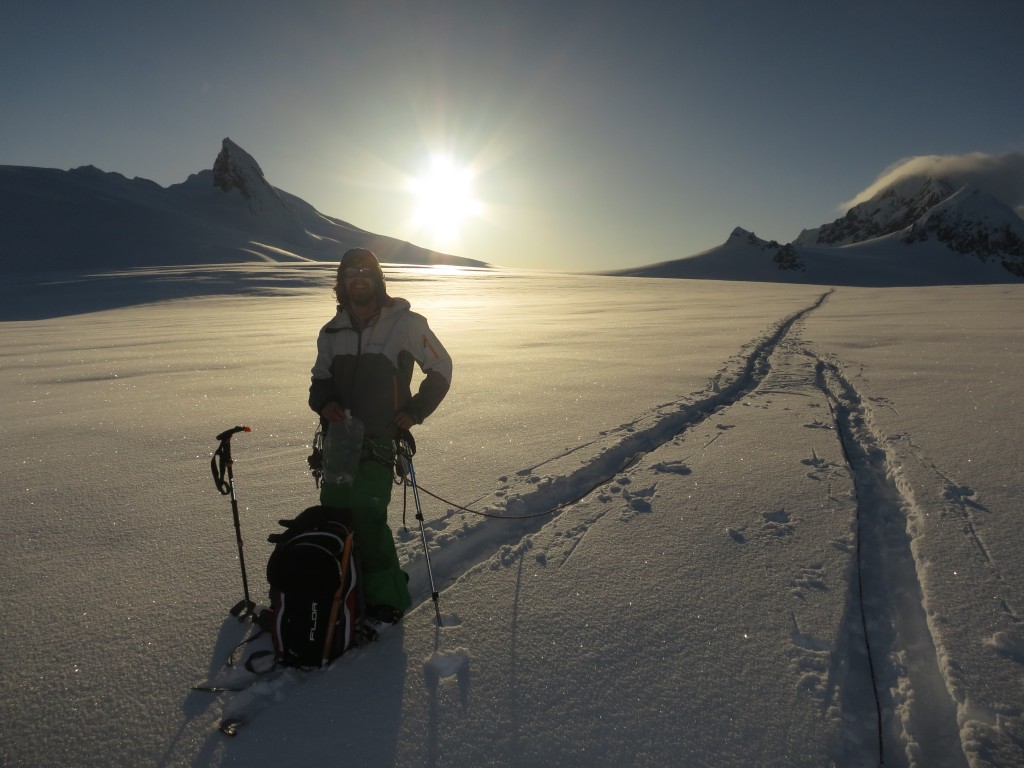
Jonathon Cooper, heading home after a phenomenal day. Photo: Louie Dawson
If one is open to the idea, it is possible for suppressed emotions and thoughts to come flaring out in that critical recovery period. I believe that this is what neural adaptation feels like, and there seems to be a strong dose-response relationship, because the more intense the experience, the more intense the post-wilderness flaring can be.
[br]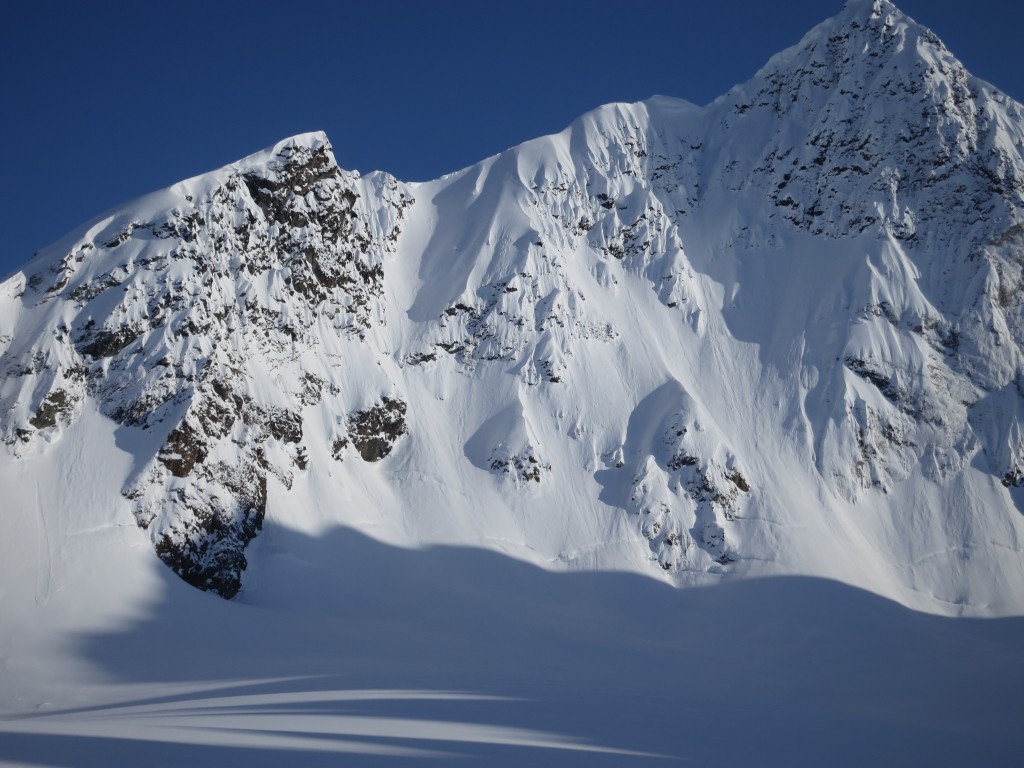
The White Fank. As seen at Sunset. Photo: Louie Dawson
Drawing on a small lifetime of these mountain-centered therapy sessions, I formulated a dream: To go to Alaska, immerse myself in one of the planet’s most powerful wilderness environments for a short while, and to see what flaring transpires.
[br]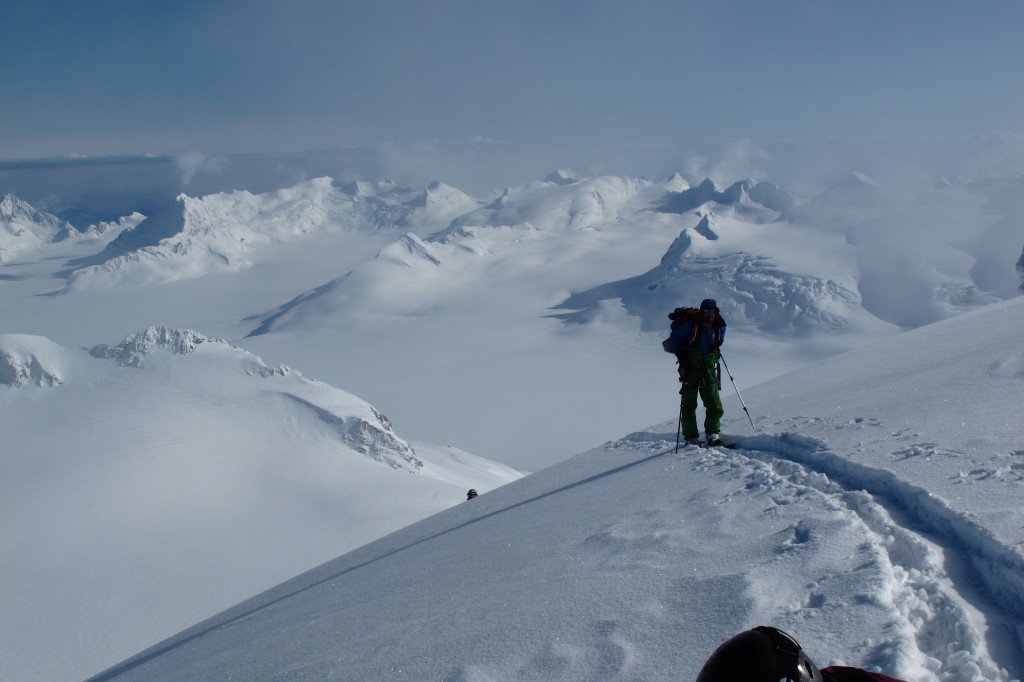
Louie Dawson, stoking hard. Photo: Russell Cunningham
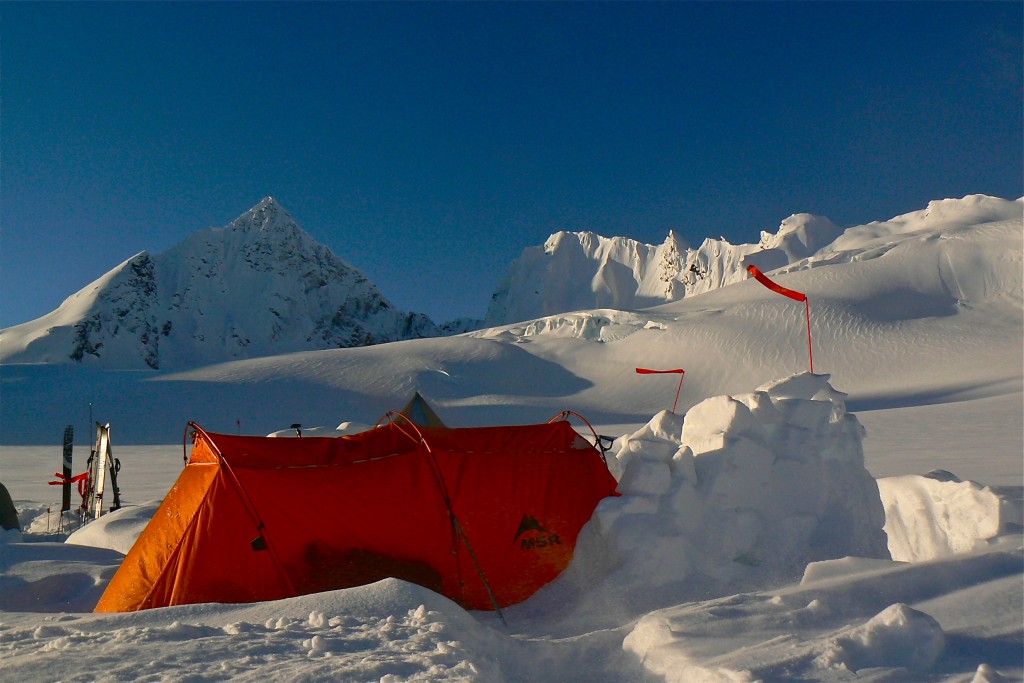
Our last morning, and one of the most beautiful of my life. Photo: Russell Cunningham
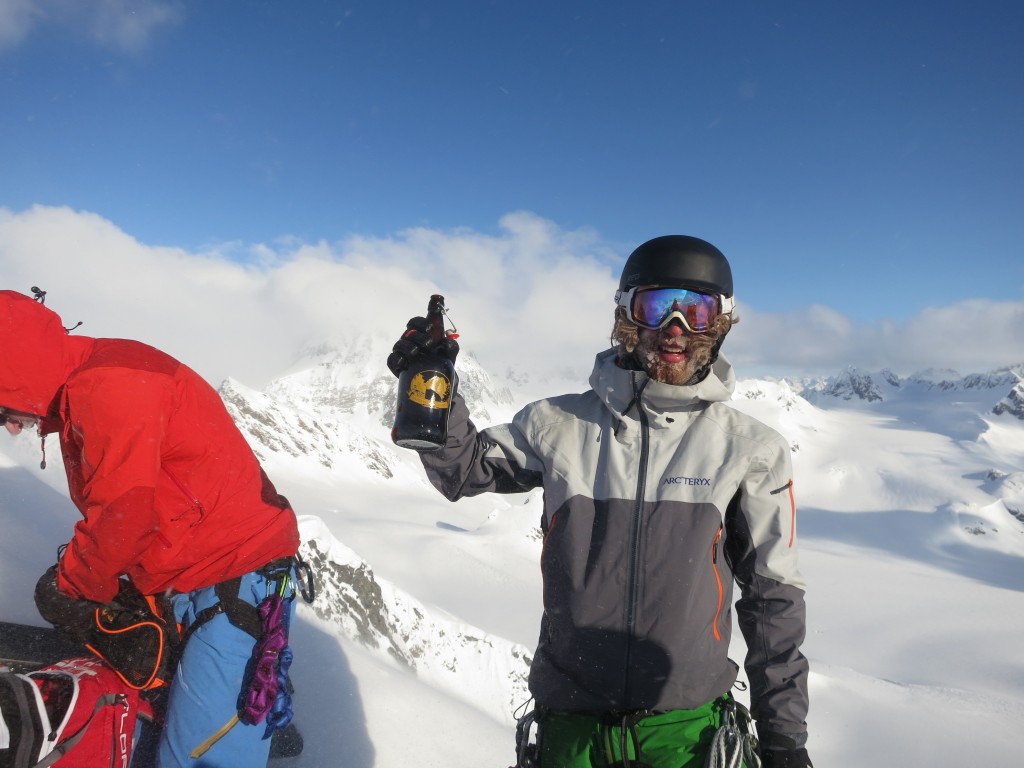
Jonathon Cooper, at the top of Spinewall Round 2, in the middle of 60mph winds, freezing cold, and more stoked than ever. Photo: Louie Dawson
What is this all about?
WHY, are we here?
Perhaps it’s simply to be here. To be open to the idea that “why” is not important. That getting the chance to be here now, to be present to ourselves, our environments, and our people. Perhaps the ultimate gift of the Wilderness Experience is this chance to be unconditionally present.
[br]Wherever your Wilderness Experience may take you, may it take you inside your own inner passion.

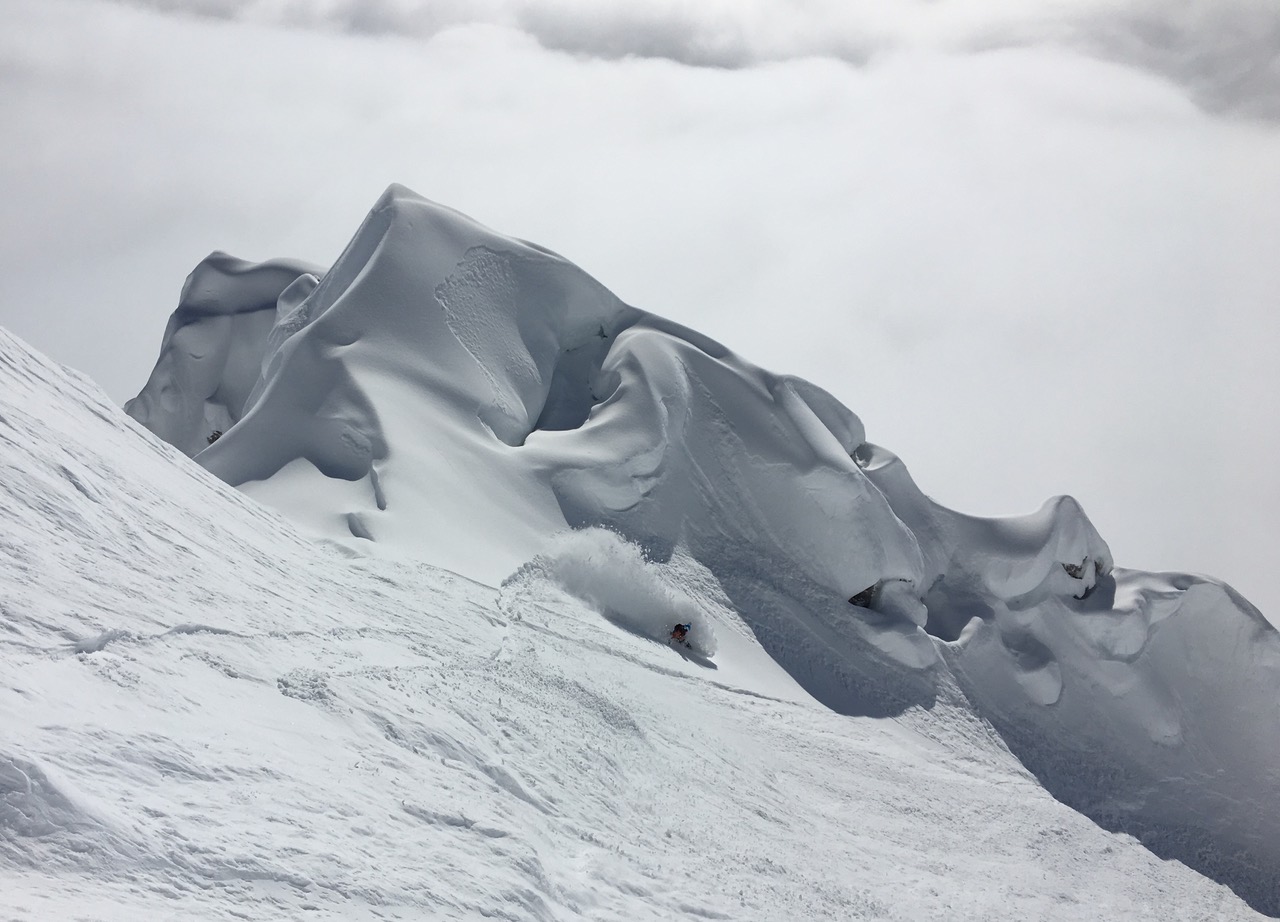
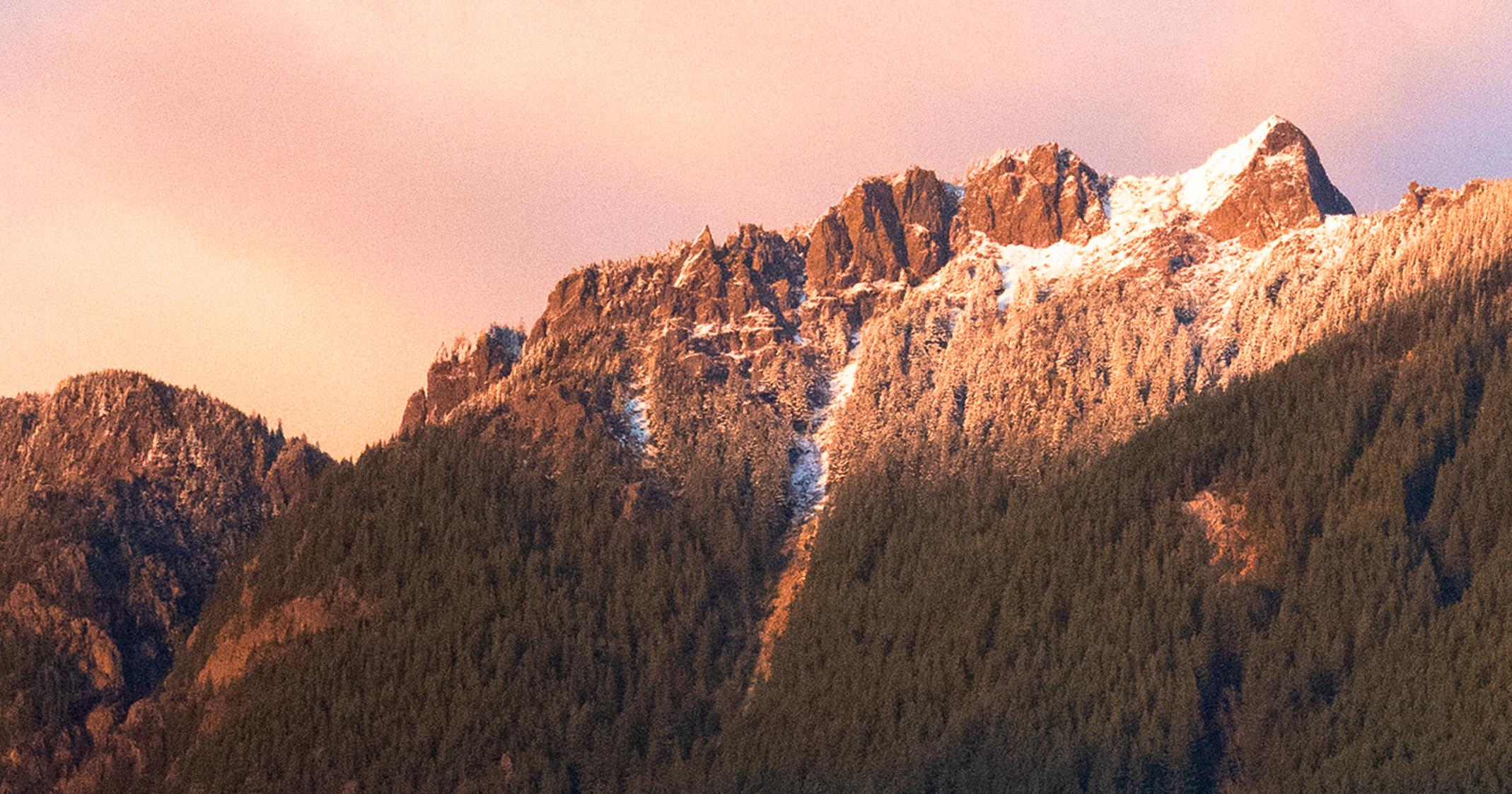
Awesome!